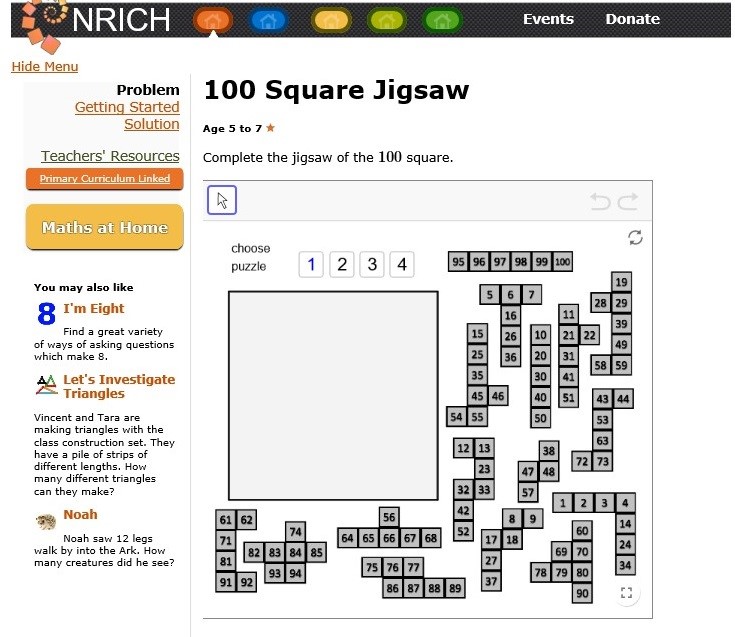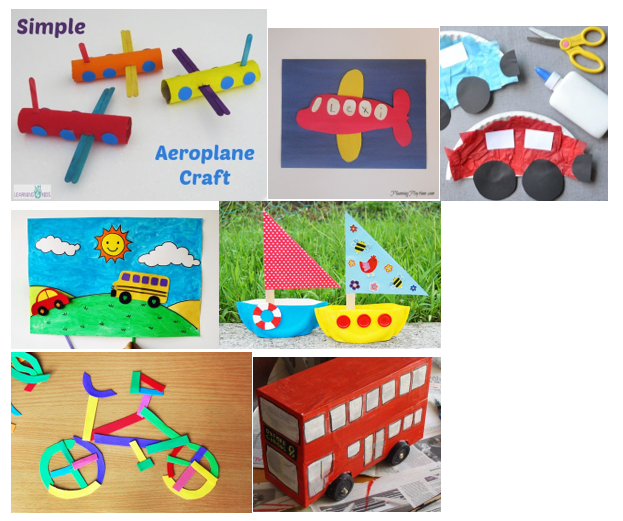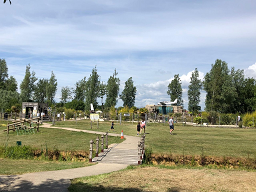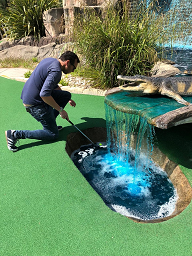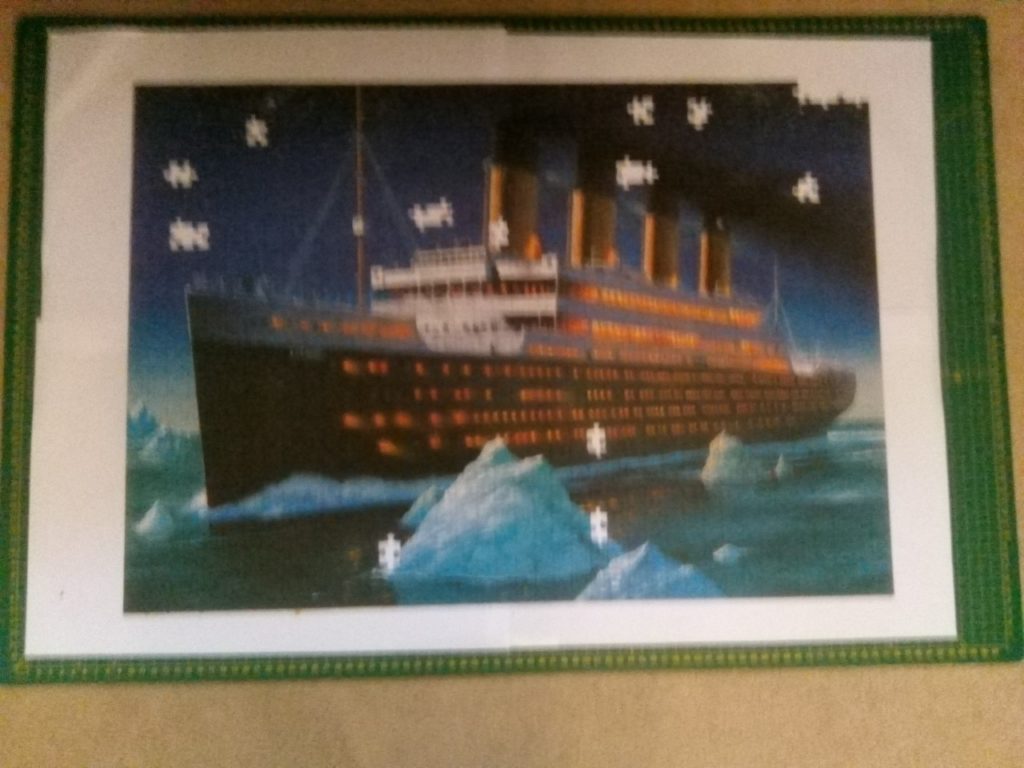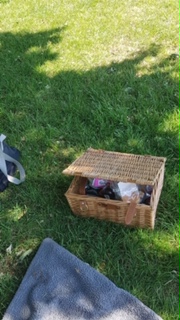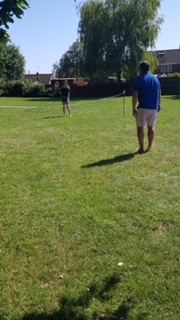Home Learning Friday 26th June 2020
We are so very much looking forward to seeing some of you in school for an hour soon! Have a lovely week 🙂
Please remember as you go about completing this home learning that our priority is reading, writing and maths so use your time to complete the tasks set for those. Pick and choose from the other subjects e.g. science, music and art; there is no expectation to complete them all.
English tasks
We are continuing our English topic on The Firework- Maker’s Daughter’ by Philip Pullman.
Genre focus: Poem (Haiku)
Lesson 1: L.O: To be able retrieve information.
https://classroom.thenational.academy/lessons/the-firework-makers-daughter-to-retrieve-information-202c7a
Lesson 2: L.O: To retrieve information.
https://classroom.thenational.academy/lessons/the-firework-makers-daughter-to-retrieve-information-3a40c4
Lesson 3: L.O: To be able to identify syllables.
https://classroom.thenational.academy/lessons/to-identify-syllables
Lesson 4: L.O: To be able to identify the features of a Haiku.
https://classroom.thenational.academy/lessons/to-identify-the-key-features-of-a-haiku
Lesson 5: L.O: To be able to write a Haiku poem.
https://classroom.thenational.academy/lessons/to-write-a-haiku
Spelling
As part of the online lessons, there are weekly spellings set. This week’s are:
|
many |
again |
|
clothes |
half |
|
busy |
money |
| people |
Mr |
|
water |
Mrs |
On SUMDOG, you will find set spelling challenges to be completed. In addition, below is a copy of the Y1 and Common Exception word lists for you to learn at home.
Year 1 CEW colour by similar letter pattern Year 2 CEW colour by similar letter pattern
Maths -National Oak Academy
The Maths lessons follow on from the maths home learning set last week. Please follow the link to access the videos.
Lesson 1: L.O: To be able to compare millilitres and litres.
https://classroom.thenational.academy/lessons/to-compare-and-order-millilitres-and-litres
Lesson 2: L.O: To be able to use known number bonds and derive related facts to 1000.
https://classroom.thenational.academy/lessons/to-use-known-number-bonds-and-derive-related-facts-to-1000-using-the-con
Lesson 3: L.O: To solve word problems about capacity and volume.
https://classroom.thenational.academy/lessons/to-solve-word-problems-about-capacity-and-volume
Lesson 4: L.O: To solve word problems about capacity and volume.
https://classroom.thenational.academy/lessons/to-solve-word-problems-about-capacity-and-volume-part-two
Lesson 5: L.O: To recall learnt skills.
https://classroom.thenational.academy/lessons/consolidation-and-application
Please continue to check MyMaths where you will be set a series of tasks to complete each week. On SUMDOG, you will find challenges and competitions to complete.
Challenge:
Science (2 weeks)
This week, we would like you to plan and complete a fact file on Worms! You can use the internet and books to support your research.
Here are a couple of websites you could use to complete your research:
http://www.bbc.co.uk/gardening/gardening_with_children/didyouknow_worms.shtml
https://schoolgardening.rhs.org.uk/Resources/Info-Sheet/Worm-fact-sheet
Family Science Activity – Friday 26th June 2020
Giant Bubbles
https://www.rigb.org/families/experimental/giant-bubbles – watch the video
- Make a home-bubble mixture and wands. Use them to look more closely at the characteristics and behaviour of soap bubbles.
- ExpeRiment with different shapes and sizes of bubbles and see what you can and cannot control about bubbles. Learn how to make giant bubbles and find out why bubbles are usually round.
- Learn how to make giant bubbles and find out why bubbles are usually round.
https://www.rigb.org/docs/giantbubbles_infosheet_0_0.pdf – details on the information sheet.
You will need:
- Good quality washing up liquid
- Water
- Glycerin (optional)
- Plastic tub or other container for bubble mixture
- Measuring jug (optional)
- Various things with holes in them for blowing bubbles with. Watch the video for ideas. Straws, pipe cleaners, paperclips, coat hangers, cookie cutters and cake tins with removable bottoms are all particularly good.
- For giant bubbles: wooden spoons (or other sticks), a couple of metres of string and a small weight you can thread through it, like a metal key ring or nut.
What to do:
A mixture we found that works is 1 litre of water, 100ml of washing up liquid and 30 ml (2 tablespoons) of glycerin. Blow some bubbles!
Put a straw into your bubble solution and try blowing gently into the liquid. You should be able to make a lot of bubbles very quickly. Then dip one end of a straw into the solution, take it out and blow gently through the other end. See if you can control the size of bubble you can blow out of the straw.
Try making bubbles using things with bigger holes, like a paperclip or pipe cleaner bent into a circle. Try poking a dry finger into a bubble, then try the same thing after dipping your finger in bubble solution.
Try making bubbles inside bubbles by poking a straw dipped in bubble solution into an existing bubble and blowing again.
Try out objects with different shaped holes, like cookie cutters or pipe cleaners bent into other shapes. Try objects with really big holes, like a coat hanger or a cake baking tin with its bottom removed. Try making giant bubbles with the special wand we show you how to make in the video.
Going Further:
- You can experiment with your bubble mixture and giant bubble wand to see just how big you can get your bubbles to be. There are lots of different bubble mixture recipes on the internet, just search for “soap bubble recipe”.
- You could try making two or three of them and comparing how good the bubbles they make are.
Music
Week 5- The Wolf
Listen to this short piece of music and find a picture of a French horn.
How does this music make you feel?
What kind of character do you think the wolf is?
Can you draw a picture of him?
Religious Education
Our school patronal feast day takes place on Sunday 28th June. In order to prepare for this special time of the year, please choose ONE of the following activities in order to learn more about St. Peter…
- Write a diary entry as St. Peter, when he escaped from prison. Describe how he felt when the Lord sent an angel to free him from the jail that Herod had cruelly locked him up in. How did they get out of the prison?
- Jesus told Peter, ‘I will give you the keys to the Kingdom of Heaven’. Design the keys and include as many symbols as you can to represent St. Peter and why he was so special. What would the keys be made of?
- Jesus said to Peter, ‘You are a rock, and on this rock I will build my church’. Could you paint or decorate a stone or pebble, to show ways in which to build God’s church? (e.g. by spreading love, faith and Good News).
- Create a selection of short prayers to ask for God’s guidance during the global pandemic. How could we demonstrate the courage, faith and commitment that was demonstrated by St. Peter, as we work to support others?
- Take a look at the St. Peter’s logo on our school website. Can you re-design the crest so it reflects the qualities of St. Peter? (e.g. trust, hope, responsibility). Why did Jesus say ‘feed my lambs’? How might St. Peter ask us to continue God’s work on earth?
- Use the internet to research St. Peter – can you make a fact file about our school saint? Which key words might you use as part of your factual information page? Were there any articles about St. Peter that particularly interested or surprised you?
Art
The Great Getaway! TRANSPORT
The title for your art this week is The Great Getaway! TRANSPORT. This can take the form of a drawing, a painting, a sculpture, a collage or anything else that you would like to create. As always, I’m sure you will impress me with your creativity!
Here are some ideas:
CHALLENGE: Design your own vehicle, maybe one that flies and can float on water!
However, if this doesn’t appeal to you then you can still send any other art work to me and I will post that on the Blog too.
Please email your artwork to me: n.pearson@stpeterswaterlooville.hants.sch.uk
Thank you
Keep creating and keep safe!
Mrs Pearson
History – Windrush
HMT Empire Windrush began sailing in 1930. It was originally used as a cruise ship and passenger liner. However, during the Second World War, she was used as a troopship. At first, she was used to transport German troops from country to country but was then taken over by the British Army to carry British soldiers. One of Empire Windrush’s most famous journeys was in 1948. After many young men and women lost their lives during World War II, Britain had a shortage of workers and needed more labourers. The British government invited people from Jamaica and other British colonies to come and work in the UK. Therefore, the Empire Windrush was sent to collect 492 people from Jamaica and bring them back to London. These people worked in industries such as transport, rail and the National Health Service. Although many of them only planned to stay for a few years, the majority stayed in the UK permanently and have been a huge influence in changing British culture.
Sadly, life wasn’t always easy for the new arrivals. Many were treated unfairly by white British people and they even found it difficult to find basic things such as somewhere to live. In 1959, an annual carnival was started in Notting Hill, London as a celebration of people’s differences. It continues to bring people from various communities together to this day and is famous for its vibrant colours and exotic dances.
Did You Know…? People living in the Caribbean saw an advert in a newspaper offering them passage to Britain and promising them work once they got there.
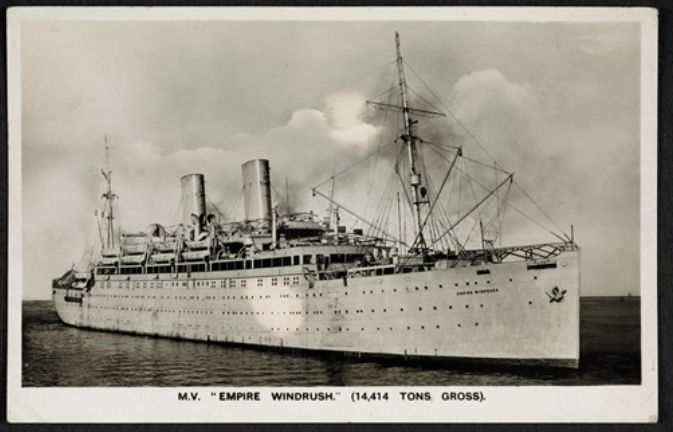

Now watch this video for more information:
https://www.bbc.co.uk/newsround/48638418
You can choose one task to complete, or more if you want to!
Task 1: Create a postcard to describe what it was like for someone who came to Britain from the Caribbean.
Task 2: Create a poster explaining why Windrush is still important today.
Task 3: Complete an acrostic poem about Windrush.
Use this poem below ‘Windrush Child’ by John Agard to help you if you’d like to.
Home Learning Friday 19th June 2020
We hope you are all well. Please remember as you go about completing this home learning that our priority is reading, writing and maths so use your time to complete the tasks set for those. Pick and choose from the other subjects e.g. science, music and art; there is no expectation to complete them all.
English tasks
We are continuing our English topic on The Firework- Maker’s Daughter’ by Philip Pullman.
Lesson 1: To be able to retrieve information.
Lesson 2: To be able to make inferences.
https://classroom.thenational.academy/lessons/the-firework-makers-daughter-to-make-inferences-eaf1af
Lesson 3: To be able to use fronted adverbials.
https://classroom.thenational.academy/lessons/to-identify-and-use-fronted-adverbials
Lesson 4: To be able to identify the key features of an action scene.
https://classroom.thenational.academy/lessons/to-identify-the-key-features-of-an-action-scene
Lesson 5: To be able to write an action scene.
https://classroom.thenational.academy/lessons/to-write-an-action-scene
Spellings
As part of the online lessons, there are weekly spellings set. This week’s are:
On SUMDOG, you will find set spelling challenges to be completed. In addition, below is a copy of the Y1 and Common Exception word lists for you to learn at home.
Year 1 CEW colour by similar letter pattern Year 2 CEW colour by similar letter pattern
Maths -National Oak Academy
The Maths lessons follow on from the maths home learning set last week. Please follow the link to access the videos.
Lesson 1: To be able to read the temperature on a thermometer.
https://classroom.thenational.academy/lessons/to-be-able-to-read-the-temperature-on-a-thermometer
Lesson 2: To estimate and measure in litres.
https://classroom.thenational.academy/lessons/to-estimate-and-measure-in-litres
Lesson 3: To solve word problems that involve litres.
https://classroom.thenational.academy/lessons/to-solve-word-problems-that-involve-litres
Lesson 4: To compare millilitres and litres using fractions.
https://classroom.thenational.academy/lessons/to-compare-mililitres-and-litres-using-fractions
Lesson 5: To be able to use millilitres.
https://classroom.thenational.academy/lessons/to-use-mililitres
Please continue to check MyMaths where you will be set a series of tasks, challenges and competitions to complete each week as well as logging into Sumdog to develop your maths skills.
Science (2 weeks)
This week, we would like you to plan and complete a fact file on Worms! You can use the internet and books to support your research.
Here are a couple of websites you could use to complete your research:
http://www.bbc.co.uk/gardening/gardening_with_children/didyouknow_worms.shtml
https://schoolgardening.rhs.org.uk/Resources/Info-Sheet/Worm-fact-sheet
Family Science Activity – Friday 19th June 2020
Balloon Car Racers
https://www.rigb.org/families/experimental/balloon-car-racers – to watch the video
The activity – Make cars which are propelled by balloon power.
ExpeRiment with designs and see what factors affect how fast or how far your car goes.
Learn how a balloon car works just like a rocket.
https://www.rigb.org/docs/ballooncarracers_infosheet_1_1.pdf – to view the information sheet
What to do:
- Make a balloon car based on the instructions Mark gives in the video.
- Decide how you will judge what makes a ‘good’ car – is it how far it goes or how fast it goes?
- Investigate what happens if you have bigger or smaller wheels (you can use other types of lids or make wheels from cardboard and use blu-tac or glue to attach them to the kebab skewers).
- Investigate what happens if you change the design of your car in other ways – you can watch the video again for inspiration for other designs.
Going further challenge:
- Measure how far your car travels using a tape measure.
- Time how fast your car travels ½ a metre – would double the speed be the time that your car would travel 1 metre? Test it out.
- You can find the speed of your car in metres per second using a stopclock and a tape measure: Measure the distance the car travels (in metres) then dividing that distance by the time it took to travel (in seconds).
Computing
Please go onto www.hourofcode.com/uk Please complete your own Worm World on scratch on the ‘Imagine a World’ task using the knowledge that you now have from completing your research on Worms. It would be lovely to see some of these, so please feel free to send a photo or link to our class email!
Music
Week 4- Cat and Duck
Listen to this short piece of music and find a picture of a clarinet
Close your eyes and imagine the cat prowling around.
Can you prowl around like a cat hunting?
Now listen to this short piece of music and find a picture of an oboe.
How does the duck move differently to the cat?
Art
Art Challenge Feast Days
We have two important Feast Days in our Church calendar for June. The 19th June is the Feast of the Sacred Heart and 29th June is the Feast Day of St Peter and St Paul.
For your art challenge this week I would you to do a creation linked to either of these Feast Days.
The Sacred Heart of Jesus is an object of devotion and always falls 19 days after Pentecost.
As you know, St Peter was given the ‘keys to heaven’ by Jesus and was our first Pope and in Matthew Ch16v18 Jesus said ‘And I tell you, you are Peter, and on this rock I will build my church.’ He is also the Patron St of fishermen. St Paul changed from not believing in Christianity to spreading the word through the letters that he wrote. Naturally, he is the Patron St of writers.
Ideas to inspire you:
Alternatively, you could do artwork to do with the Patron St that you have been linked to in school (England St George; Scotland St Andrew; Ireland St Patrick: Wales St David), or the Patron St of your home country.
However, if this doesn’t appeal to you, then you can still send any other art work to me and I will post that on the Blog too.
Please email your artwork to me:
n.pearson@stpeterswaterlooville.hants.sch.uk
Thank you.
Home Learning Friday 12th June
We hope you are all well and continuing a rhythm of home learning. Please remember as you go about completing this home learning that our priority is reading, writing and maths so use your time to complete the tasks set for those. Pick and choose from the other subjects e.g. science, music and art; there is no expectation to complete them all.
English tasks
We are continuing our English topic on The Firework- Maker’s Daughter’ by Philip Pullman.
Lesson 1: To be able to find the meaning of words
Lesson 2: To be able to make inferences
Lesson 3: To be able to identify and use different sentence types
Lesson 4: To be able to identify key features of a recount
Lesson 5: To able to write a recount
https://www.thenational.academy/year-2/english/to-write-a-recount-year-2-wk4-5
Spelling
As part of the online lessons, there are weekly spellings set. This week’s are:
| father | class |
| grass | pass |
| plant | path |
| bath | hour |
| move | prove |
On SUMDOG, you will find set spelling challenges to be completed. In addition, below is a copy of the Y1 and Common Exception word lists for you to learn at home.
Maths -National Oak Academy
The Maths lessons follow on from the maths home learning set last week. Please follow the link to access the videos.
Lesson 1: To be able to identify halves, thirds and quarters of shapes
Lesson 2: To be able to identify fractions of shapes with different numerators https://www.thenational.academy/year-2/maths/to-identify-fractions-of-shapes-with-different-numerators-year-2-wk4-5
Lesson 3: To be able to identify unit fractions of quantity
https://www.thenational.academy/year-2/maths/to-identify-unit-fractions-of-quantity-year-2-wk5-1
Lesson 4: To be able to identify fractions of a quantity and shape
Lesson 5: To be able to identify equivalent fractions
Please continue to check MyMaths where you will be set a series of tasks to complete each week as well as logging into Sumdog to develop your maths skills.
Science
Now that you have found out about the parts of a plant and how pollination happens, we would like you to design a garden. Find out about what plants are the best for attracting bees, how a water feature can attract wildlife and cheap and eco ways to encourage mini beasts to visit.
Here are some top tips for your design:
- Water- Bees need water to drink and frogs and dragonflies may visit
- Wildflowers- Butterflies and bees are drawn to areas of wildflowers.
- Put up nesting boxes.
- Include a bird table and bath.
- Plant trees.
- Grow a hedge.
- Make a wilderness area.
- Somewhere to sit and enjoy it all
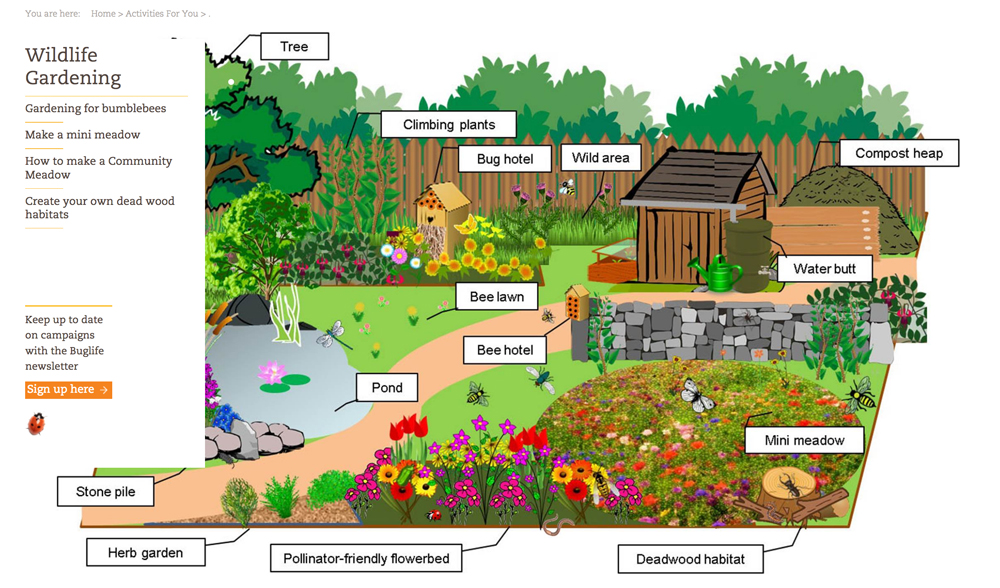



Family Science Activity – Friday 12th June 2020
Candle chemistry
Safety advice for parents
- Do the activity on a table which is cleared of any other flammable objects or materials. Use your judgement as a parent to decide whether or not to let your child light the candles on their own.
- Make sure you’ve blown out any candles after doing the activity. Don’t move a lit candle when doing this activity. Don’t allow your child to touch the wick or candle until it has completely cooled.
- Don’t leave a lit candle unattended at any time. There’s more extensive safety advice on using candles from the UK Fire Service here: http://bit.ly/BeFireSafe
The activity
- Make a blown out candle relight as if by magic.
- ExpeRiment to find out how long a candle will burn in different amounts of air.
- Learn about the chemistry of how a candle burns.
https://www.rigb.org/families/experimental/candle-chemistry
What you will need
- At least one tea light or other small candle.
- Gas-powered cooker lighter (or long handled matches).
- Glass jars or glasses of various sizes.
- Stopwatch (maybe the one on your smartphone) or other way of measuring time.
What to do
https://www.rigb.org/docs/candlechemistry_infosheet_0_1.pdf – for information sheet about the activity.
Going Further
Learn more facts about fire: http://bit.ly/FireFacts
Make a carbon dioxide fire extinguisher for your candles: http://bit.ly/CO2Ext
Watch a video on how candles are made: http://bit.ly/CandlesMade
Use a candle to suck water into a glass like Josh does at the end of the film: http://bit.ly/WaterCandle
Music
Week 3- Bird
Listen to this short piece of music and find the picture of the flute.
Is the pitch of this music low or high?
What do you think the bird is doing in the story?
Can you find some everyday objects that make a high pitch?
Religious Education
Following the celebration of Pentecost in our Church calendar, we would like you continue to reflect upon our Mission and how we can ‘use the gifts God gave us to make our world a better place’.
Just as the Holy Spirit had appeared to the Apostles of Jesus and gave them hope while they were in Jerusalem, we would like you to consider how YOU can use the power of the Holy Spirit to support and encourage others.
Can you complete ONE of the following activities, to explore how we can continue God’s work on Earth as His followers?
– Design a logo for a charity that you feel could be made in order to support others. You can be as creative as you like! Can you include symbols of the Holy Spirit?
– Research one of the following organisations: CAFOD, Christian Aid, Missio. What is special about this charity? How do they put the needs of others first?
– Create a new school Mission Statement for St. Peters – what else can we do to help others in our community and the wider world? Which actions do you feel would be most important?
– Paint a picture of Oscar Romero. How did he follow the values set out by our school Mission Statement? Can you include key facts about his work?
– Write a letter to your local priest. Could you suggest any ways in which you could support the Church in raising money for good causes, in the future? E.g. by helping in a bake sale or coffee morning, once it is safe to do so.
ART-Key Stage One
For your art challenge this week I would like you to do a creation linked to a Nursery Rhyme or book. This could be a collage picture of Humpty Dumpty made out of egg shells, a wanted poster of the Big Bad Wolf, or the witch from one of my favourite books, ‘Room on a Broom.’ You may even do your art in the woods, such as leaving the Gruffalo’s footprints or make a small stick house. It can be a picture using any materials or a 3D creation. Let your fantastic imaginations go wild!
WOW! CHALLENGE: Learn the Nursery Rhyme or a page from the book and perform it to your family.
Ideas to inspire you:
However, if this doesn’t appeal to you, then you can still send any other art work to me and I will post that on the Blog too.
Please email your artwork to me:
n.pearson@stpeterswaterlooville.hants.sch.uk
Thank you
Keep creating and keep safe!
Mrs Pearson
What we have been up to…
I’ve been busy back at school meeting new faces but missing all of you. I’m looking forward to seeing you all & hearing what you’ve been up to.
Home Learning Friday 5th June
We hope you are all well and enjoying this beautiful weather. Please remember as you go about completing this home learning that our priority is reading, writing and maths so use your time to complete the tasks set for those. Pick and choose from the other subjects e.g. science and art; there is no expectation to complete them all.
English- Oak National Academy
This week’s English lessons continue to come from the Government’s online school, Oak National Academy. This week’s lessons follow on from the previous home learning that we have set. The lessons start with a teacher explaining the lesson and setting the tasks; the children can click through at their own pace, pausing the video when needed. All they need is a pencil and paper. We have found that the best internet browser to use for the lessons in order that the videos work is Google Chrome.
Lesson 1: To be able to retrieve information
Lesson 2: To be able to retrieve information-part 2
Lesson 3: To be able to identify the key features of a setting description
Lesson 4: To be able to identify and use commas in a list
https://www.thenational.academy/year-2/english/to-identify-and-use-commas-in-a-list-year-2-wk3-4
Lesson 5: To able to write a setting description
https://www.thenational.academy/year-2/english/to-write-a-setting-description-year-2-wk3-5
Spelling
As part of the online lessons, there are weekly spellings set. This week’s are:
| every | great |
| break | steak |
| pretty | beautiful |
| after | fast |
| last | past |
On SUMDOG, you will find set spelling challenges to be completed. In addition, below is a copy of the Y1 and Common Exception word lists for you to learn at home.
Year 1 CEW colour by similar letter pattern
Year 2 CEW colour by similar letter pattern
Maths -Oak National Academy
The Maths lessons follow on from the maths home learning set last week. Please follow the link to access the videos.
Lesson 1: To be able to follow a route around a map
https://www.thenational.academy/year-2/maths/to-follow-a-route-around-a-map-year-2-wk3-4
Lesson 2: Consolidate and review lesson
https://www.thenational.academy/year-2/maths/to-consolidate-and-review-year-2-wk3-5
Lesson 3: To be able to relate halves and quarters to division
https://www.thenational.academy/year-2/maths/to-relate-halves-and-quarters-to-division-year-2-wk4-1
Lesson 4: To be able to identify the parts of a fraction
https://www.thenational.academy/year-2/maths/to-identify-the-parts-of-a-fraction-year-2-wk4-2
Lesson 5: To be able to identify half of a shape
https://www.thenational.academy/year-2/maths/to-identify-half-of-a-shape-year-2-wk4-3
Please continue to check MyMaths where you will be set a series of tasks to complete each week as well as logging into Sumdog to develop your maths skills.
Science
Find out all about pollination and how bees and other small insects make sure that flowers make seeds. Try following these links to help you:
https://www.youtube.com/watch?time_continue=29&v=j-S5ui9Us7U&feature=emb_logo
https://www.youtube.com/watch?v=zy3r1zlC_IU
You can draw a poster, write instructions or paint a picture explaining how it happens. There is an example below if you would rather copy that.
Family Science Activity – Friday 5th June 2020
Homemade Lava Lamp https://www.rigb.org/families/experimental/homemade-lava-lamp
Experiment with objects of different shapes and sizes. See what makes a difference to whether something sinks or floats in water.
Learn how an object’s density affects if something is likely to sink or float. https://www.rigb.org/docs/lavalamp_infosheet_0_1.pdf
Questions to ask children:
- Before each activity: can you predict what will happen? Why do you predict that? (For example, can you predict what will happen when we squash the tin foil really tightly?
- Can you predict what will happen if we use metal spoon instead of a plastic one?
- Can you predict what will happen if we peel the fruit?) Why does the diet drink float while the non-diet one sinks?
- What do you think will happen when we pour the oil into the glass of water? Why?
- What do you think is in the bubbles that are rising up in the lava lamp? Why do you think they sink back down again?
Going Further:
- You can give your child or children a lump of plasticine and explore how to mould the plasticine into shapes that float. Discuss what the floating shapes have in common compared to shapes that sink.
- The density of an object affects its buoyancy. You can learn more about this and how density affects whether something sinks or floats here: http://bit.ly/
- Buoyancy You can try to make a ‘density tower’ by floating liquids of different density on top of each other, as shown in this video: http://bit.ly/DensityTower
- Here’s a quick lava lamp using fizzy water – http://bit.ly/FizzyLavaLamp
Music
Week 2- Grandfather
Listen to this short piece of music and find the picture of the bassoon.
What mood do you think Grandfather is in?
How do you think grandfather might move?
How is this music the same or different to Peter’s music?
Art
Read all about it! St Peter’s are IN THE NEWS!
For this week’s Art Challenge I would like you to produce some art using old newspapers or magazines! It can be anything from cutting out shapes and creating your own abstract art, or landscape, to making something using Paper Mache. What you make can be left black and white or even painted (using watercolours is very effective). Whatever you create I’m sure you will ‘Make the headlines’ on the Art Blog!
However, if this doesn’t appeal to you can still send any other art work to me and I will post that on the Blog too.
Please email your artwork to me: n.pearson@stpeterswaterlooville.hants.sch.uk
Thank you- Keep creating and keep safe!
Mrs Pearson
What we have been up to this week…
Mrs Osborne: Mrs Osborne has loved watching these poppies that she has grown flower.. aren’t they beautiful! She has been making homemade pizza and has been helping her son complete his 1000 piece Beano puzzle.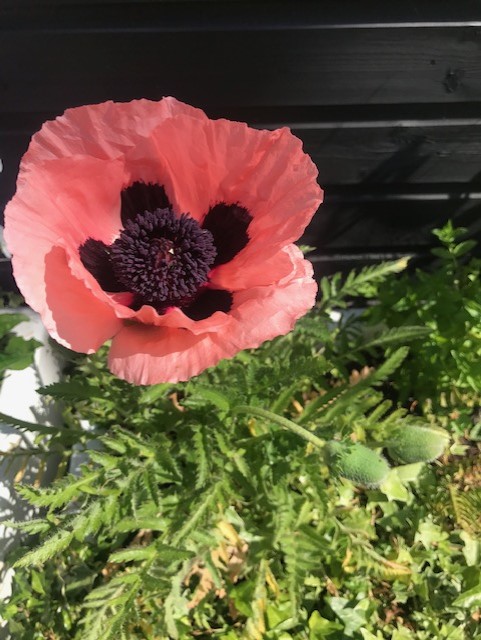

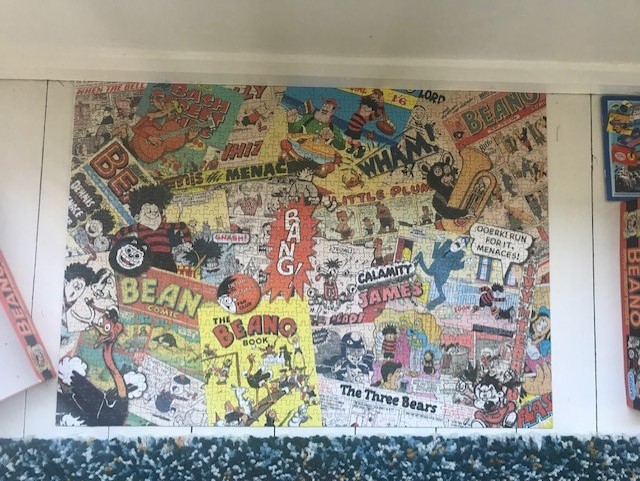
Mrs. Sumba and her family have finally finished their Titanic puzzle. It was very challenging and unfortunately, several pieces are missing! Mrs Sumba has really enjoyed going for lots of long walks and has found lots of interesting pathways on Portsdown Hill!
Mrs Pitman: It was my birthday last weekend so we took our badminton set to our local park. My daughter, husband and I had a lovely day playing Badminton and eating a yummy picnic. I couldn’t be with the rest of my family but it was still special.
